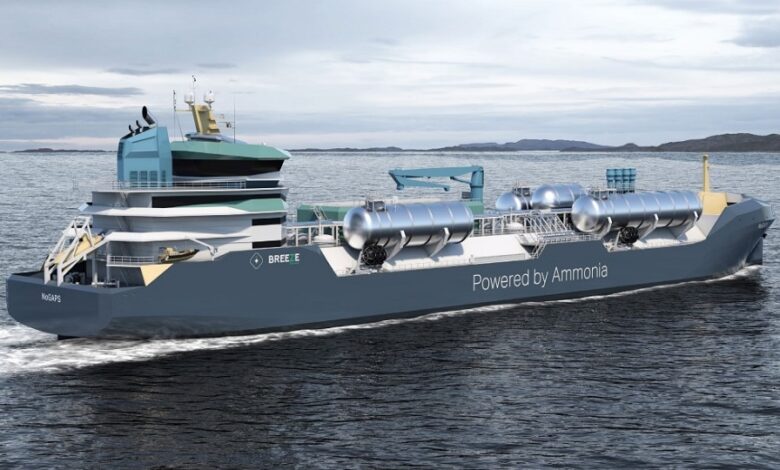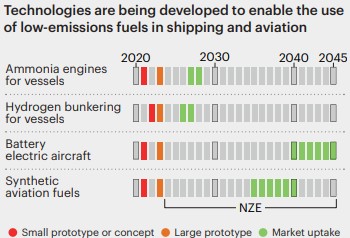IEA sees ammonia as shipping’s go-to solution for reaching net zero by 2050

The International Energy Agency (IEA) said in a 2023 update of its ‘Net Zero by 2050’ report that shipping will primarily turn to ammonia to decarbonise the sector.
The ‘Net Zero by 2050: A Roadmap for the Global Energy Sector‘ report was published in 2021. It translated the goal of limiting global warming to 1.5°C into a concrete roadmap for the global energy sector. Instead of starting to fall as envisaged in the 2021 report, demand for fossil fuels and supply investments have increased spurred by the energy crisis of 2022 after Russia invaded Ukraine.
But projections for shipping are still optimistic for 2050. The report update pointed out that energy efficiency improvements in shipping by 2030 will be key to the decarbonisation of this mode of transport.
In the 2023 report update, IEA looked at shipping and aviation as a combined transport sector and claimed that bioenergy, hydrogen, and hydrogen-based fuels will ramp up from less than 1% of the energy consumed today in shipping and aviation to almost 15% in 2030 and 80% by 2050.
“After 2030, oil use decreases rapidly – by more than 200,000 barrels per day per year on average. In shipping, efficiency improvements including the use of wind assistance and fuel switching cut oil use. Ammonia is the primary low-emissions fuel used to decarbonise shipping, with the contributions from biofuels and hydrogen limited in large part by their relatively high costs,” IEA said.
IEA noted that biofuels, hydrogen, ammonia, and methanol had no share in energy consumption in international shipping last year. In the future that will rise to 8 and 13% for biofuels in 2030 and 2035, 4 and 7% for hydrogen in 2030 and 2035, and 6 and 15% for ammonia in 2030 and 2035. The smallest rise will be for methanol as it will rise to just 1% by 2035.
By 2050 the situation will change even more for green fuels. Biofuels and hydrogen will have a 19% share each while methanol will rise the least, to just 3%. The biggest stake in energy consumption for international shipping will be held by ammonia with a 44% share by 2050.
The use of ammonia or methanol as a fuel in shipping requires engine modifications and fuel supply system development. According to IEA, around 150 ammonia-ready vessels were on order at the end of 2022. Also, the update predicts that most quantities of unabated fossil fuels will be gone by 2050 and the small amount still being used by that time – around 15 EJ globally – will be consumed by aviation, shipping, and heavy industries.
“Several major ship engine makers are in the final stages of developing ammonia two-stroke engines for commercialisation by 2025 while large methanol-powered container ships are being delivered for the first time in 2023 just as electrolytic hydrogen-based methanol commercial production starts. Small-scale hydrogen fuel cell ferries began operating in Norway and the United States in 2023,” the Agency stated.


